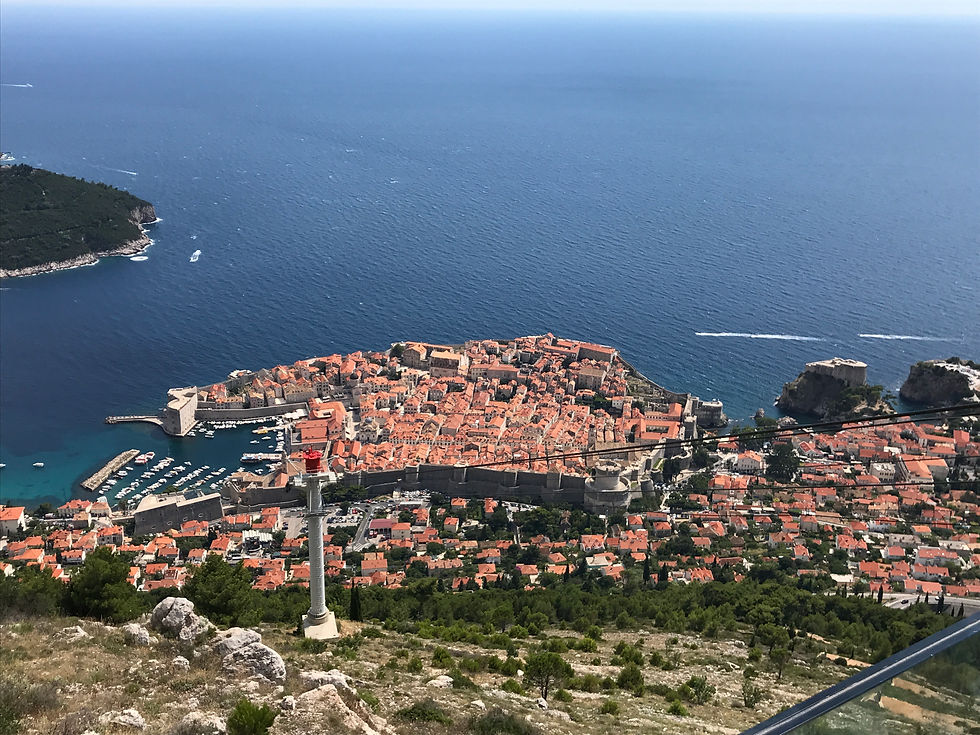Balkans - Book Review
- Jody Ferguson

- 1 hour ago
- 4 min read

I have travelled extensively in the Balkan region, most notably the countries of Croatia and Bosnia. Wherever my journies take me, I like to read not only the history of the regions I visit, but also fictional works—either in translation or those written in English—depicting the character and characters of the region. Two works of fiction that I read this summer were “Bridge on the Drina” (photo above) by Ivo Andrić , and “The Walnut Mansion” by Miljenko Jergović. Both works focus on families or places over long periods of time; in the case of the former a town called Višegrad in Bosnia, and the case of the latter the beautiful city of Dubrovnik in Croatia (photo below).

Andrić won the Nobel Prize for Literature in 1961 for his work The Bridge on the Drina, beating out John Steinbeck, Robert Frost, and Graham Greene, among others. He was the first author from Yugoslavia to win the coveted prize. A Serb, Andriċ tells the story of a bridge built in the Bosnian town of Višegrad by a long-lost son in the 16th century. The man in question, the builder of the bridge, was taken as a young boy from his Serbian family in Višegrad by the Turkish forces of the Ottoman Empire, as part of a tributary/levy system. This tributary existed in the region for 500 years, wherein Christian Serb and Croat families were expected to turn over one son, who would then be taken to Istanbul, converted to Islam, and made a soldier for the Turkish Sultan. This particular young boy rises through the ranks and attains the position of grand vizier, the highest-ranking soldier-statesman in the Ottoman Empire, second only to the Sultan. He decides to build a bridge in the town at the site of his painful separation from his mother (a heart-breaking scene, hauntingly depicted by Andrić). The bridge assumes the central point of the town and its generations of Bosnian, Croat, Serb, Turkish, and Sephardic Jewish citizens. The central point of the bridge is the site for official meetings, romantic liaisons, legal and illicit trade, and horrid executions that Andrić describes taking place over four centuries. Each chapter of the novel focuses on a different era. The final one describes the destruction of the bridge during World War One, the dispersion of Višegrad’s inhabitants, and the dissolution of the centuries-long social hierarchy that defined the town. The beauty of the novel is not just in the fascinating history and dynamics of the volatile region, but in the relationships Andrić so remarkably describes in his writing.

Jergović’s The Walnut Mansion is about a Croat family named Sikirić of Dubrovnik. The novel focuses on the lifespan of one of its daughters, Regina. It can be read as an allegory of the tragic 20th century for the Western Balkan region. Fittingly, Regina’s life spans from 1907 to 2002. In it we witness the horrible famine years of the First World War, the establishment of the new state of Yugoslavia, the horrific occupation of the country by Germany and Italy, the repressive Tito years, and finally the bloody civil war that pitted the Croats, the Serbs, and the Bosnians against one another for a decade during the 1990s. What is most unique about the novel is the chronology. Jergović goes backward in time from the death of Regina in the newly established independent Croatia of 2002, to her birth in the the distant province of Dalmatia in the Austrian-Hungarian Empire on the eve of its entry into WWI, which will prove to be its last, fatal policy decision. Although Regina is the focus, the book describes the often-tragic lives of her parents, her brothers, and her daughter Dijana. Caught up in the momentous events of the 20th century, the characters do not always meet a graceful end. Jergovic’s describes the horrible years of occupation during WWII, when all sides were guilty of atrocities, through the eyes of three of Regina’s brothers. Two of them end up on opposing sides of the partisan resistance movements, which often spent as much time killing one another as they did Italian and German occupiers. One of the brothers clearly understands the choice he has made, “He would testify before God and before men that they weren’t animals and murderers but had tried to save their people and land. They had tried to do that at the highest price that living men can pay. They’d lost the peace of their souls—a man whose hands had clutched a knife would no longer caress his own child, grandchild, or a plum tree in the orchard above his house…They became monsters above men and could only be understood by those who had cut throats for the other side.” In more lighter moments we see Regina’s daughter Dijana and her foibles with members of the opposite sex, as well as Dijana's relationship with her twin children, a boy and a girl. Unlike Andrić’s work, the focus of Jergović’s novel is not a specific geographic location, though it centers on Dalmatia. The focus is on Regina (often not the most likable character) and the orbital relationships to her life. It is fitting that Jergović chose to focus on a woman in spite of the background and orgy of violence that encapsulated the Western Balkans for most of the 20th century. In the novel he observes, “Men write history with knives, and women summon it with words.”
The two novels are fine representations of an area of the world that has always been seen as a backwater and yet has been a central focus of European history for much of the past millennium.







Comments